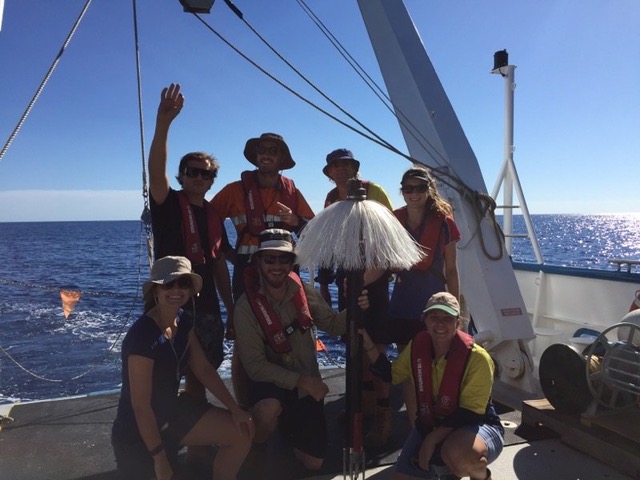A Method for Determining Mixing Rates from Concurrent Temperature & Velocity Measurements
Ocean mixing has historically been estimated using Osborn’s model by measuring the rate of dissipation of turbulent kinetic energy and the background density stratification N while assuming a value of the flux Richardson number, Rif. A constant Rif of 0.17 is typically assumed, despite mounting field, laboratory, and modeling evidence that Rif varies.This challenge can be overcome by estimating the turbulent diffusivity of heat K_T using the Osborn–Cox model. This model, however, requires measuring the rate of dissipation of thermal variance (chi), which has historically been challenging, particularly in energetic, flows because the high wavenumbers of the temperature gradient spectrum are unresolved due to the limitations of the current technology, i.e. the FP07 sensor:
-
- The FP07 temperature signal is attenuated by the sensor and hence getting a true estimate of the signal variance is hard. This attenuation is poorly known and varies from unit to unit (FP07s are made by hand). Rockland’s quick_look returns the spectrum of the gradient of temperature but this spectrum is not corrected for the response of the FP07 thermistor because there is no consensus on its frequency response.
- The measured signal depends on the time constant of the FP07 thermistor — the scientific community is still unsure of its value and whether or not the response is single-pole or double-pole.
- The time constant is speed-dependent because the properties of the boundary layer around the probe (e.g. thickness) are dependent on profiling speed.
-
- Integrating the spectrum, without a correction for the response of the FP07, will under estimate the variance of the gradient of temperature and, hence, chi.
Therefore, the probe-dependent attenuation makes it hard to quantity the errors and the uncertainty involved with measuring high-wavenumber temperature gradient spectra.
While this concept has been exploited for moored time series, particularly near the bottom boundary, it can be used with data collected with gliders, and autonomous and ship-based vertical profilers, from which there are the most measurements. By using the IC subrange, chi, and hence K_T, can be estimated even in very energetic events. During less energetic periods, the temperature gradient spectra can also be integrated to obtain chi. In this paper, both of these techniques are used and analyzed for microstructure profiles collected at a site known for its very energetic internal waves. This study demonstrates that the spectral fitting approach resolves intense mixing events with K_T ≥ 10^-2 m2/s.
The validation of this method for microstructure profiling applications will allow Rockland instrument users to utilize their temperature measurements, in conjunction with velocity shear measurements, to calculate mixing rates with reduced error and uncertainty
To overcome this difficulty, a method in the paper Bluteau et al. 2017, Determining Mixing Rates from Concurrent Temperature and Velocity Measurements, is described that determines chi by spectral fitting to the inertial-convective (IC) subrange of the temperature gradient spectra.
While this concept has been exploited for moored time series, particularly near the bottom boundary, it can be used with data collected with gliders, and autonomous and ship-based vertical profilers, from which there are the most measurements. By using the IC subrange, chi, and hence K_T, can be estimated even in very energetic events. During less energetic periods, the temperature gradient spectra can also be integrated to obtain chi. In this paper, both of these techniques are used and analyzed for microstructure profiles collected at a site known for its very energetic internal waves. This study demonstrates that the spectral fitting approach resolves intense mixing events with K_T ≥ 10^-2 m2/s.
The validation of this method for microstructure profiling applications will allow Rockland instrument users to utilize their temperature measurements, in conjunction with velocity shear measurements, to calculate mixing rates with reduced error and uncertainty.
The full paper can be found here



